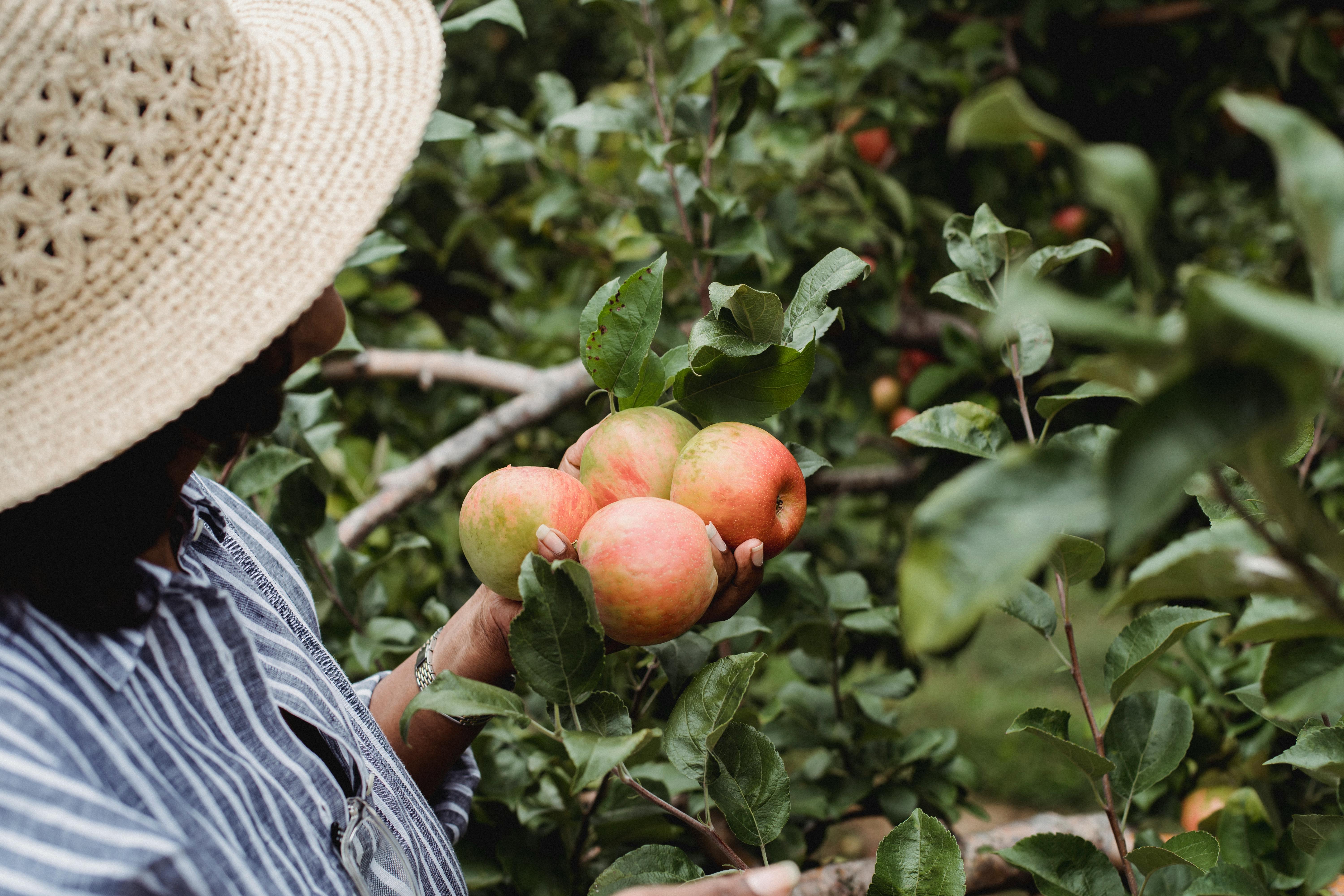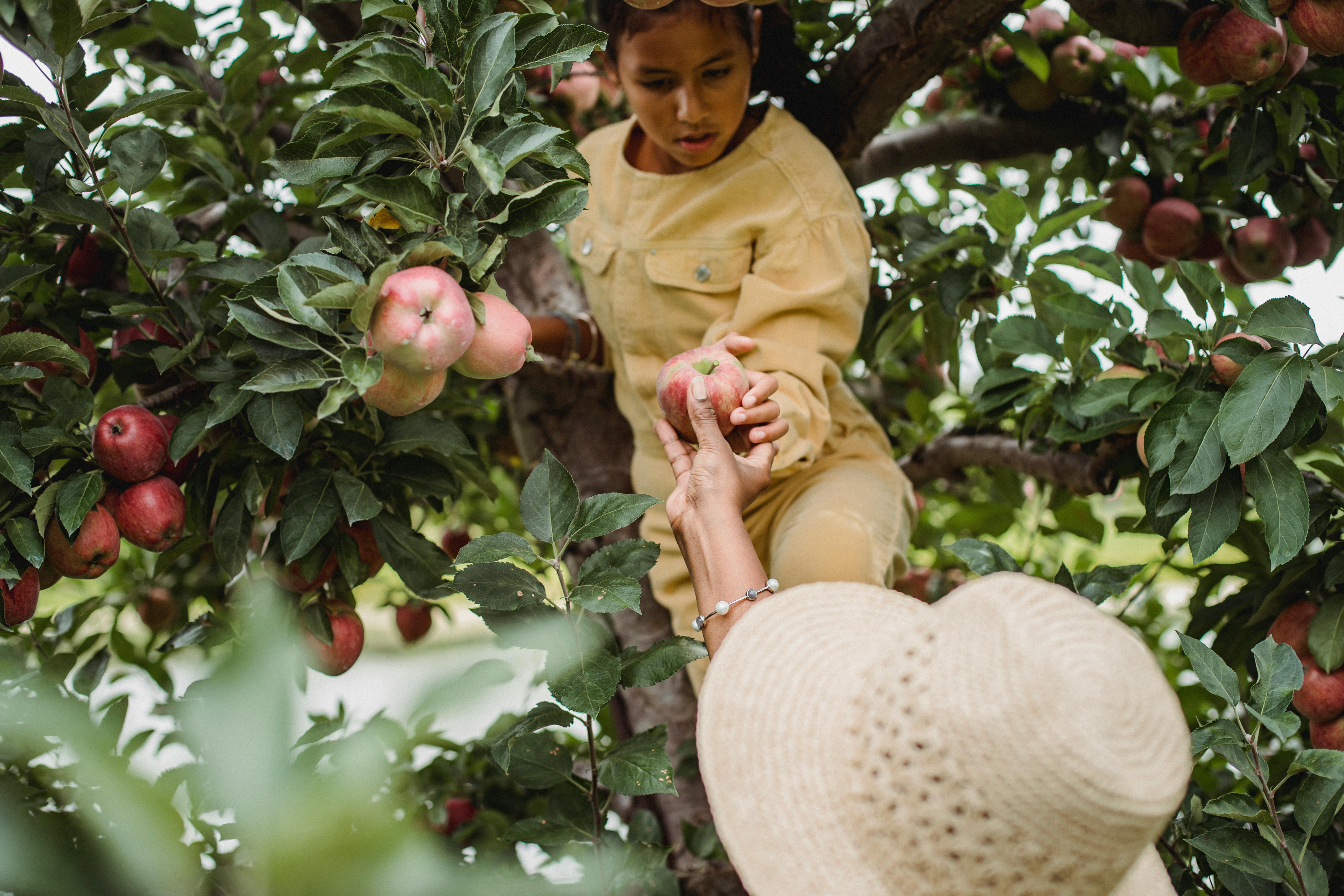Growing fruit trees from cuttings is a great way to propagate existing fruit trees or create new varieties. By taking cuttings from a mature tree, you can produce clones of the parent tree that will yield the same kind of fruit. This method can be used to propagate apple, pear, plum, peach and other stone fruits as well as citrus trees. It is an easy and cost-effective way to create your own orchard. In this article, we will explain how to grow fruit trees from cuttings.Fruit trees that are suitable for growing from cuttings include apple, pear, peach, apricot, almond, plum, cherry and quince. Cuttings should be taken from young healthy shoots in the early spring before flowering or in the late summer after harvesting. The cuttings should be 6-8 inches long and have at least two nodes on them. Once planted in a well-draining potting mix and kept moist but not wet they should begin to root within 4-6 weeks.
Gathering the Materials Needed to Grow Fruit Trees from Cuttings
Gathering the materials needed to grow fruit trees from cuttings is a relatively simple process. The most important thing is to make sure you have the right materials to get started. This will include a cutting tool such as a sharp knife or pruning shears, rooting hormone, potting soil, and containers.
The cutting tool is needed to take cuttings from existing fruit trees. The best time of year for this is usually in the spring or early summer when the tree is actively growing. The cuttings should be taken from healthy branches that are at least six inches long and contain several buds. It is important that the cuttings are free of disease or pests before taking them.
Rooting hormone should be used to help encourage root growth in the cuttings. This can be found at most garden centers and is applied directly to the end of each cutting after it has been taken. Rooting hormone helps increase the chances of successful root formation in the cutting and should be used whenever possible.
Potting soil will be needed for each container when planting your cuttings. Make sure that you use a soil mix that drains well and does not contain any fertilizers or additives. It is also important to make sure that each container has adequate drainage holes in the bottom so excess water can escape easily.
Containers are also an important part of growing fruit trees from cuttings. Any type of container can be used but it should have enough room for the roots of each cutting to spread out properly once they have been planted. Plastic pots or trays are often used but any type of container will work as long as it has plenty of room for air circulation around each cutting and adequate drainage holes in the bottom so excess water can escape easily.
Once all your materials have been gathered, you are ready to begin planting your fruit tree cuttings! With some patience and care, you should soon have a thriving fruit tree that was grown from just a few small cuttings!
Preparing the Cuttings to Grow Fruit Trees
Growing fruit trees from cuttings is an economical and efficient way of producing plants for your home garden. This method allows you to propagate trees from existing stock without needing to purchase seedlings or saplings. Preparing cuttings correctly is essential for successful propagation, as it ensures that the cutting has a good chance of developing roots and thriving in its new environment.
To prepare a cutting, start by selecting healthy material from an established plant or tree. It’s best to select a cutting from a branch that is at least one year old, as this will have more mature wood than younger growth and will be more likely to take root. Make sure that the cutting is between 3-6 inches long and contains several sets of leaves. Once you have selected the cutting, use pruning shears or a sharp knife to trim it just below a node – this is where the leaves meet the stem – and remove any excess foliage.
Next, dip the end of the cutting into rooting hormone powder or gel to help stimulate root development. This can be applied either directly onto the end of the stem or into a shallow bowl containing water mixed with rooting hormone. Finally, place the cuttings in moist potting soil or vermiculite and cover them with plastic wrap or a plastic bag. Make sure that there is plenty of air circulation around the cuttings and ensure that they are not allowed to dry out during this stage of growth.
Once planted, water your cuttings regularly and place them in a bright but shaded area until they are ready for transplanting outdoors. When transplanting, make sure that you dig a hole large enough for your tree’s root system so that it has plenty of room to grow in its new environment. With proper care and attention, your fruit trees should begin to produce flowers and fruits within two years!
Planting the Cuttings to Grow Fruit Trees
Growing fruit trees from cuttings is a great way to get started in the world of gardening. Cuttings are simply pieces of stems, roots, or leaves that have been cut from an existing plant and can be used to propagate a new tree. It is a relatively simple process and can be done with minimal experience in gardening. The most important part of propagating a tree from cuttings is making sure that you have taken the correct steps to ensure that your new tree will thrive and produce delicious fruit.
The first step in propagating fruit trees from cuttings is to choose healthy, disease-free cuttings. This means selecting stems, root sections, or leaves that are free from any kind of damage or disease. Once you have chosen healthy cuttings, they should be placed into damp potting soil or other growing medium. The cuttings should be kept moist but not overly wet as this can lead to root rot and other issues.
Once the cuttings have been planted, they should be placed in an area where they will receive ample sunlight. This will help promote healthy growth and help them develop strong root systems. If the cuttings are kept too wet or too dry, they may not take root properly and could die before producing any fruit. Additionally, it is important to fertilize regularly with a balanced fertilizer designed for fruit trees as this will ensure adequate nutrient levels for proper growth and development.
Finally, it is important to prune your trees regularly to encourage strong growth and maximum yields of delicious fruit. Pruning helps remove dead branches and encourages new growth which will allow for more space for developing fruits. It also improves air circulation which helps control pests and diseases that can affect fruit trees. Pruning should be done in late winter before new buds begin forming on the tree branches.
Overall, planting fruit trees from cuttings is a great way to get started with gardening and can provide years of enjoyment as you watch your tree grow and produce delicious fruits for you to enjoy! With just a little bit of research, patience, and dedication you will soon have a thriving garden full of beautiful fruiting trees!
Watering the Cuttings
Watering cuttings is an essential part of their successful growth. It is important to ensure that the cuttings are kept moist at all times, and this can be achieved by providing them with regular waterings. When watering cuttings, it is important to use tepid or lukewarm water, as this will help to prevent shock to the plants. Additionally, it is important to avoid over-watering, as this can lead to root rot and other problems. When watering cuttings, it is best to water slowly and deeply until the soil is evenly moistened.
Providing Shade for the Cuttings
Shade should also be provided for the cuttings in order to protect them from direct sunlight. This will help to keep the soil temperature more consistent and prevent wilting or drying out of the plants. It is best to provide shade for the cuttings using a light cloth or cover such as cheesecloth or burlap. Additionally, it is important to ensure that any cover used does not trap too much heat around the cuttings, as this can lead to overheating and stressed plants.

Taking Care of New Growth on the Fruit Tree Cuttings
Getting successful fruit tree cuttings can be a rewarding experience for gardeners. While grafting and budding are more reliable methods of propagating fruit trees, it is possible to create new trees from cuttings. Taking care of these new growths requires patience and dedication.
The first step is to ensure the cutting is planted in a soil mix that drains well and offers good aeration for root development. The cutting should be planted at the same depth as it was cut from the parent tree, with 2-3 buds above the soil line. The soil should be kept moist but not overly wet, as too much moisture can cause root rot.
It can take several months for root growth to occur in cuttings, so patience is needed during this time. If needed, a rooting hormone can be used to help encourage root growth but should be used sparingly as too much may damage the cutting. Additionally, a warmth source such as a heat mat can help to keep temperatures ideal for rooting.
Once roots have formed, new growth will start to appear above ground in several weeks or months depending on the species of tree being propagated from cuttings. During this time, additional care must be taken to ensure that the new tree has enough water and nutrients while also protecting it from pests and diseases that could otherwise damage or kill the tree. Fertilizing with a balanced fertilizer every two weeks during the growing season will help promote healthy growth and fruit production in future years.
Finally, if conditions are right, it could take up to two years before fruit production begins on newly propagated trees from cuttings. To ensure that your new trees are producing healthy fruits, regular pruning should be done throughout their lifetime to keep them healthy and productive for many years to come.
Transplanting Fruit Tree Cuttings Once Established
Transplanting fruit trees can be a difficult process, but it doesn’t have to be. Taking cuttings from a mature fruit tree and transplanting them once they are established is an easy way to start a new tree. There are several steps that need to be taken in order to ensure the health of the new tree once it is transplanted.
The first step in transplanting fruit tree cuttings is to select the right cutting. Look for strong, healthy branches that are thick enough to support the new tree, and make sure that there are several buds or leaves on each branch. Consider taking multiple cuttings from different parts of the mother tree, as this will increase the chances of success.
Once you have chosen your cuttings, you will need to treat them carefully in order to ensure successful transplantation. Use sharp pruning shears or scissors to take the cutting near its base, making sure that it is cleanly severed from the mother tree. Immediately after taking a cutting, place it in water or wrap it in wet cloth or newspaper until you are ready to plant it.
When planting your cuttings, make sure that you use fresh soil and plenty of water. Plant each cutting about two inches deep in its own pot and keep it moist but not soggy. Place each pot in an area with plenty of sun and keep an eye on them for signs of growth such as buds forming or leaves sprouting out of the soil.
Once your cuttings have been planted and established for several months, they can then be transplanted into a larger pot or into your garden bed. When transplanting them into a larger pot, use fresh soil and plenty of water again, making sure that each cutting has room for its roots to spread out before adding any additional soil around it.
It may take some time for your transplanted fruit trees to become established and begin producing fruit, but with proper care they should do so eventually. Prune away any excess branches or shoots as needed in order to keep your fruit trees healthy and productive over time.
Pruning Newly Grown Fruit Trees From Cuttings
Pruning newly grown fruit trees from cuttings is an important step in getting your tree off to a healthy start and ensuring it produces the best quality fruit. When pruning newly grown fruit trees, you should aim to remove any dead or diseased branches, as well as any crossing or rubbing branches. This will encourage the tree to form a strong and healthy structure. You should also remove any branches that are growing too close together, as this can cause overcrowding and reduce light penetration into the canopy. Ultimately, you want your tree to have an open structure that allows for adequate sunlight and air circulation throughout the canopy.
Training Newly Grown Fruit Trees From Cuttings
Training newly grown fruit trees from cuttings is also an important step in establishing a strong and healthy tree. Training involves using specific pruning techniques to shape the tree’s canopy and promote a desirable structure. When training newly grown fruit trees, you should aim to guide the growth of the branches in a certain direction to create an open canopy that allows for adequate sunlight and air circulation throughout. Training can help you keep your tree at a manageable size while also encouraging vigorous growth and high quality fruit production.
It’s important to remember that pruning and training newly grown fruit trees from cuttings can be time consuming but is essential for establishing a healthy tree with good yields of high quality fruit. If you follow these steps carefully, your new fruit trees will be off to a great start!

Conclusion
Growing fruit trees from cuttings is a cost-effective way to produce plants with an identical genetic makeup as the parent tree. It is an especially useful technique for propagating species that do not come true from seed and those that are difficult to propagate from other methods. The success of taking cuttings depends on selecting the right material, using the correct treatments and providing suitable environmental conditions. Cuttings should be taken from healthy, disease-free plants, and specific treatments should be applied to ensure sufficient rooting hormone is available for root development.
To help ensure success, additional steps can be taken such as dipping cuttings in the rooting hormone, keeping them in a warm environment and providing adequate light. With careful attention to detail, it is possible for even novice gardeners to successfully propagate their own fruit trees from cuttings.



